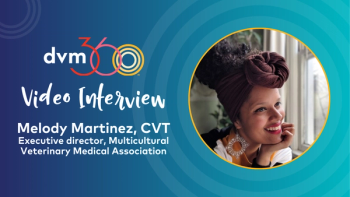
UC Davis veterinary technician creates equine CT table
No crane needed here; this team looked instead to an innovative carbon fiber design.
Jason Peters, RVT, RLAT, stands by the CT table he created for large animal patients. | Photo courtesy of UC Davis
Performing a computed tomography (CT) scan on an equine patient is often a long process that requires the assistance of a team of veterinarians and technicians as well as forklifts and cranes. But at the University of California, Davis, this process just became a lot less complicated thanks to technician Jason Peters, RVT, RLAT, who works for the veterinary medical teaching hospital's diagnostic imaging service. Peters created an innovative table made out of carbon fiber, according to a university release.
“We set out to acquire a new large animal table for CT,” Peters says in the release, noting that the existing table has been in use at UC Davis for 30 years. “Due to our room configuration, however, we could not purchase a preexisting table. So we decided to build our own.”
The new table would need to be able to withstand thousands of pounds, and after the team discussed potential materials for the project, carbon fiber stood out. Carbon fiber can be molded to take any shape and strength. NASA uses it in the space program because of its strength-to-weight ratio, high stiffness, chemical resistance and temperature tolerance, the release states. It's also used in exotic sports cars, motorcycles, bicycles and sailboats.
Peters positions the table. | Photo courtesy of UC Davis
However, carbon fiber's strength also comes from proper application, Peters says in the release. “If it's not molded correctly, that greatly affects the strength and durability of the piece,” he says. “So we made sure to work with professionals who knew the best techniques.”
Peters collaborated with Finishline Advanced Composites, a carbon fiber manufacturer that specializes in automotive parts, and the UC Davis College of Engineering. The table they designed weighs only 100 pounds but can handle up to 10,000 pounds in any given area. This ensures that it can handle off-balanced loads and certain impacts during loading and unloading of a large animal patient. The old table weighs twice as much and is not nearly as strong, the release states.
Another drawback to the old table was its stationary position, meaning that if a horse needed both front and hind legs scanned, the horse itself had to be physically repositioned by the technicians. The new table Peters designed has slide actuators that enable it to move both side to side and to and from the CT machine, allowing the horse to remain stationary while the table is adjusted.
The table in use. | Photo courtesy of UC Davis
The new table accommodates the skulls and extremities of equine, bovine and exotic patients. If a small animal CT is scheduled immediately after one of the larger species, the new table can be quickly dismantled and moved out of place thanks to easily removable locking pins in the legs that allow the table to be lifted out of place. Peters estimates that it now takes half the time it used to to switch from large animal to small animal.
According to the release, extension plates were also made to provide an extra surface for anatomy that doesn't fit on the main table. These pieces were made in the same way as the main table and were engineered to hinge onto the main table at any given point.
Newsletter
From exam room tips to practice management insights, get trusted veterinary news delivered straight to your inbox—subscribe to dvm360.






